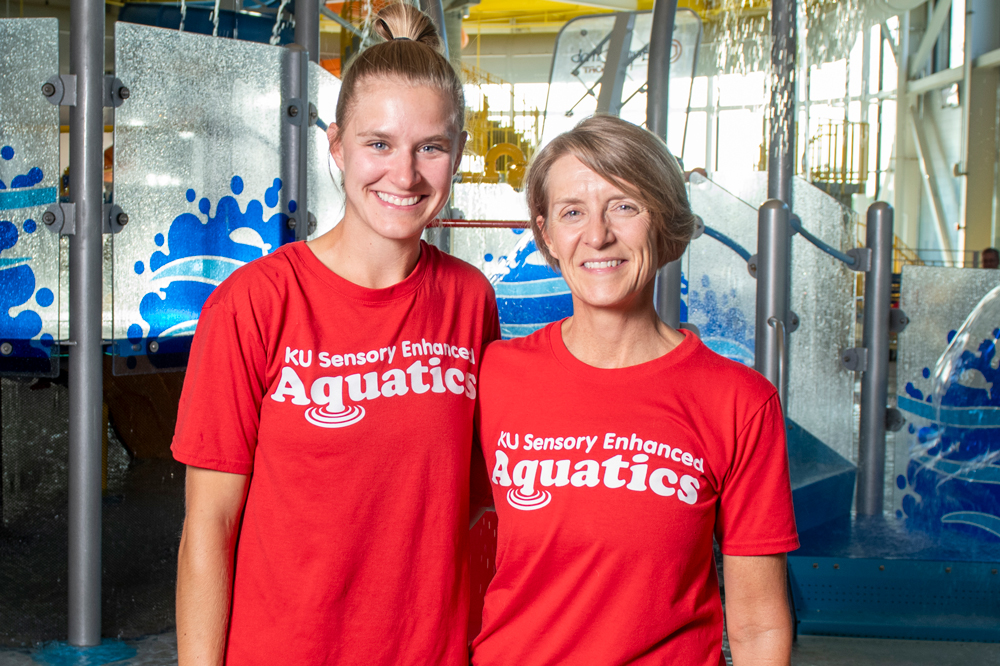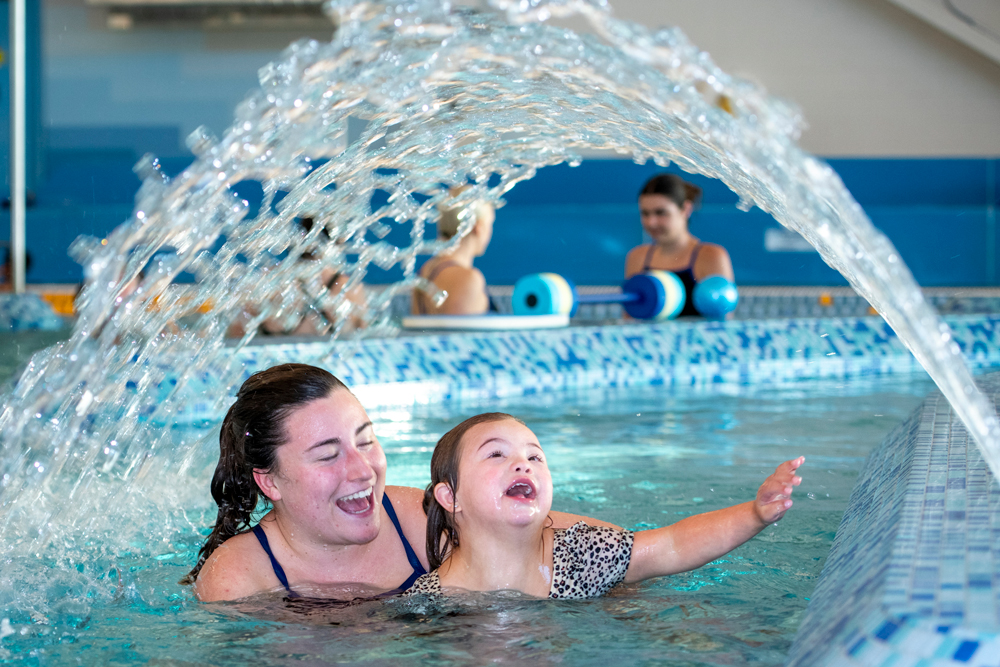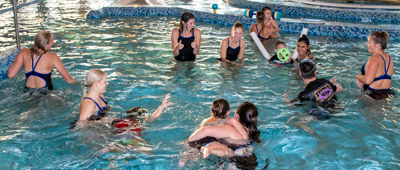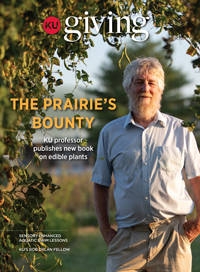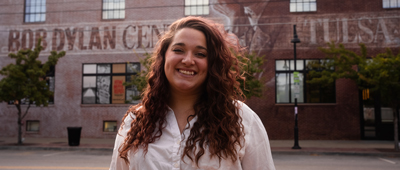KU Giving Magazine
Making Aquatics Accessible to All
Emily Becker
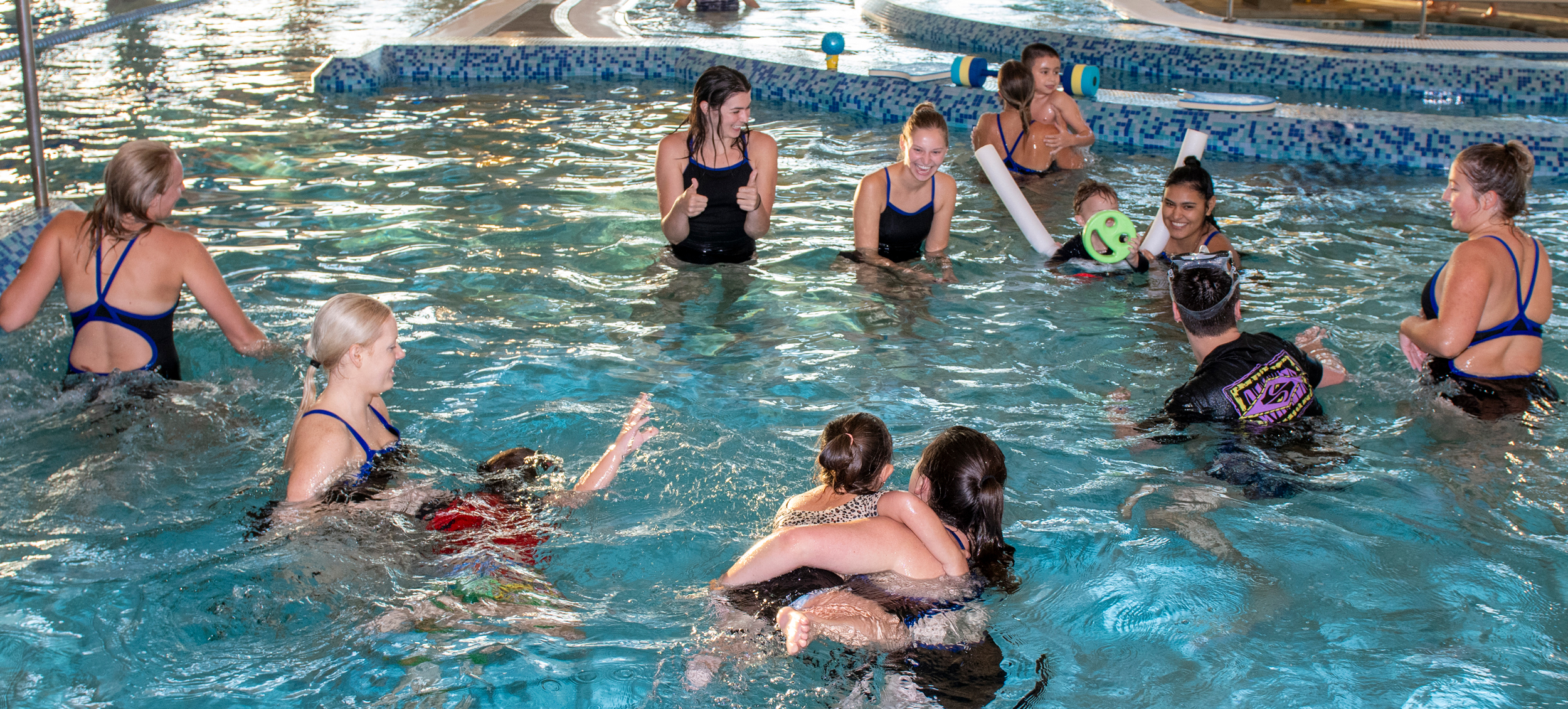
Specially tailored swim lessons help children with autism dive into water safety and life skills.
On its surface, KU Sensory Enhanced Aquatics (KU SEA) is a program that provides swim lessons to children and adults with autism. But in between learning to float or to hold their breath underwater, participants are also gaining safety skills and confidence that translate to life on dry land.
Children with autism are 160 times more likely to drown than other children, but most swim lessons aren’t designed with the unique needs of those on the autism spectrum in mind. KU SEA is one of the few swim programs in the country focused on children with autism, giving participants an experience that sets them up for success.
Not wanting to be a statistic is one of the initial reasons Adam Courter and his family, including his son Pierson, who has autism, were drawn to the program. Courter said they expected Pierson would learn basic water safety skills, but now, after more than six years of KU SEA classes, Pierson has not only learned how to survive in the water but knows specific strokes and has grown in a way that makes driving the 45 minutes to classes each week well worth it.
“We’ve seen a lot of additional things outside of just his ability to survive and thrive in the water: His confidence is better, his social skills are better, and we think a lot of that has to do with us participating in this program as long as we have,” Courter said.
Founded in 2012 by Lisa Mische Lawson, Ph.D., CTRS and KU SEA program director, and her colleague Lauren Foster, the classes are focused on one-on-one learning and partner students with a teacher who is a health professional or KU student majoring in a relevant area such as occupational therapy, speech-language pathology, physical therapy or nursing.
“The kids really need one-on-one support, especially in community settings where there’s a lot of other things going on,” said Mische Lawson. “We have games at the end of each lesson so kids can still benefit from socialization, but to really maximize their learning, having individualized support is really helpful.”
This format also allows instructors to meet students where they are in terms of their skills and comfort level in the water and build a trusting relationship.
“It seems like swimming is always kind of secondary with these lessons,” Courter said. “What I mean by that is they create a relationship first and foremost. And then once they’ve established that, then the swimming really starts to show up.”

Adam and Pierson Courter with KU SEA instructors Kayla Hamner, Krista Else and Lisa Mische Lawson.
KU SEA is currently offered three times a year — a spring, summer and fall session — in partnership with community organizations including the cities of Lenexa, Merriam and Fairway and previously with the Johnson County Parks and Recreation. The classes have grown from a group of five students in the very first class to more than 300 swimmers total and the addition of adult classes — with a waitlist of 20-40 students every session, according to Kayla Hamner, MOT, OTR/L and KU SEA program manager.
While there is a small fee for the classes, Mische Lawson and Hamner don’t want financial barriers to be an issue for students and offer scholarships for families. They created a LaunchKU fundraiser this past summer to cover equipment needs for the class, such as aquatic toys and swimsuits for instructors, and support scholarships for swimmers. The event raised more than $15,000, including a $3,000 match from Mische Lawson and her husband.
“I enjoyed summer swimming and still enjoy swimming, and I want everyone to have that opportunity, regardless of disability or other challenges,” Mische Lawson said. “My husband and I feel strongly that we should be supporting this because it’s important, and we also feel strongly that we should be supporting this if we’re going to ask anyone else to support it.”
In the future, Mische Lawson and Hamner hope to be able to continue to grow KU SEA — whether it’s through partnering with more community centers, developing training materials to increase the capacity of current staff or training others in different cities to create their own swim lesson programs, which the KU SEA team has already started.
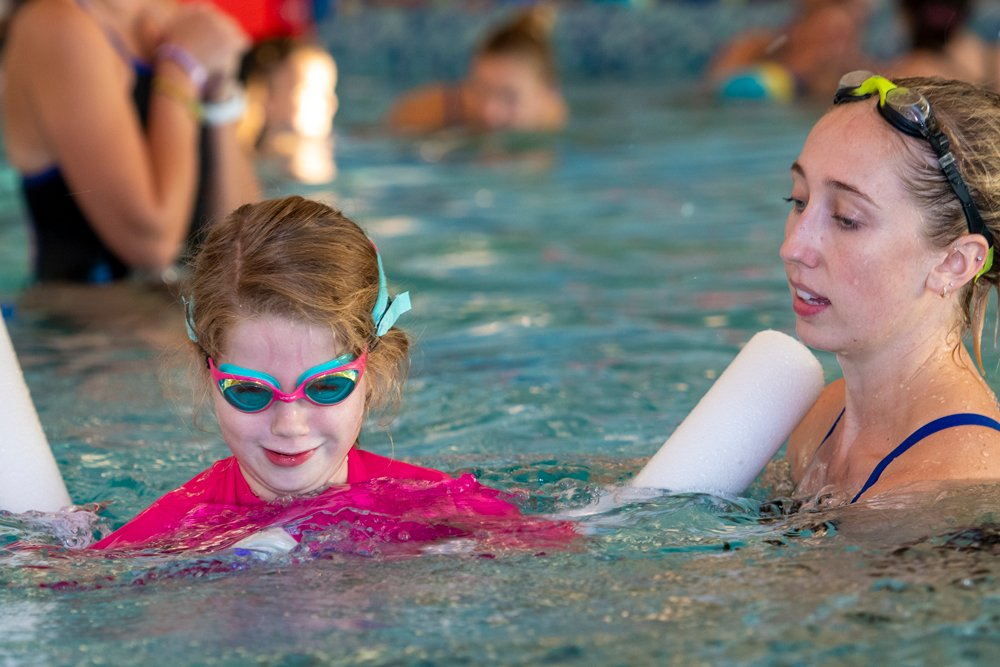
Clara Dowling swims with instructor Paige Molstad.
In addition to learning important skills that will hopefully translate into a lifetime of recreational physical activity, Hamner says she has witnessed the classes turn into a community that creates a new sense of engagement for the students.
“They feel like they can, maybe for the first time, do something other than just their normal therapies,” she said. “The classes are a safe place for them to get to engage and enjoy leisure and recreation in ways that other kids get to do on a consistent basis that they may not be able to.”
That sense of trust extends to the program participants and their families. Courter says he’s witnessed not just his son but others in the program get a little bit better each year. This progress has helped him and his wife, Jill, feel more comfortable in other situations, like taking Pierson to the neighborhood pool, for example.
“We’re not as scared as parents,” Courter said. “There’s such a need for kids just learning how to swim to have that place where they can connect and continue to grow socially. It’s pretty awesome.”

